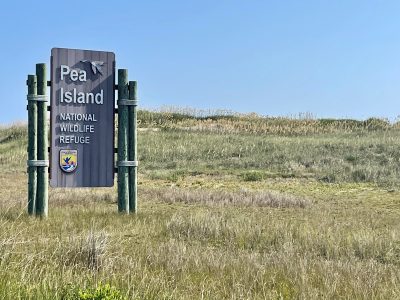U.S. FWS Coastal Program report sheds light on another successful year of restoration

By Daniel Hayden
For many of us summer and the shore go together like cake and ice cream or a rod and a reel.
Our shores are more than just a place to recreate, though. They also protect us from storms and floods, while providing critical habitat for marine life, waterfowl, and diverse plant communities. These unique ecosystems contribute to the more than 40% of the U.S. economy that takes place within our estuary regions through industries such as tourism, recreation, and research.
While there are many programs that support the protection of our estuaries and coasts, I enjoyed reading the 2020 Accomplishment Report of the U.S. Fish & Wildlife Service’s Coastal Program.
Click here to read the full 2020 USFWS Coastal Program Accomplishments Report
Some of the key highlights include
Completed 147 projects across 18 states and territories
Engaged 147 project partners
Restored 8,600 acres
61,200 acres were voluntarily protected
FWS funding was leveraged 36:1 in partner funding
510 miles of streams were restored
Projects supported 45 threatened species
he report also remined us of many of the important benefits our estuaries and coasts, according to the report:
$23.2 billion storm protection per year by mitigating the impact of hurricanes
$43.6 billion in revenue in recreational fishing and migratory bird hunting
900 million trips to coastal areas for holidays last year
85% of all waterfowl live along coast habitats
In a month in which the Intergovernmental Panel on Climate Change (IPCC) definitively linked human behavior to global warming, it is encouraging to review reports like this to recognize human behavior can also support nature-based solutions that help mitigate climate change, attenuate storms and protect coastal communities. While not enough on its own, it’s helpful.
Beyond facts and figures, I recently visited the Pea Island National Wildlife Refuge which is managed by the Fish and Wildlife Service. Created in 1938, the Refuge was created to establish nesting, resting, and wintering habitat. Located just south of Hatteras Island, this 5,834 acre barrier island is home to more than 360 different species of birds.
The vast man-made meadows and freshwater tidal marshes play a vital role in preserving the diversity of plant and animal life in the region and demonstrates what can be done with solid planning, community partnerships and letting nature return. It’s now recognized as an Important Bird Area by the Audubon Society for its significance in providing essential habitat for birds.
As we look to mitigate climate change and foster healthy estuaries and coastal communities, the work supported by the Coastal Program is making a difference.
To find a local Wildlife Refuge near you, check out this map.
Completed 147 projects across 18 states and territories
Engaged 147 project partners
Restored 8,600 acres
61,200 acres were voluntarily protected
FWS funding was leveraged 36:1 in partner funding
510 miles of streams were restored
Projects supported 45 threatened species The report also remined us of many of the important benefits our estuaries and coasts, according to the report:
$23.2 billion storm protection per year by mitigating the impact of hurricanes
43.6 billion in revenue in recreational fishing and migratory bird hunting
900 million trips to coastal areas for holidays last year
85% of all waterfowl live along coast habitats
In a month in which the Intergovernmental Panel on Climate Change (IPCC) definitively linked human behavior to global warming, it is encouraging to review reports like this to recognize human behavior can also support nature-based solutions that help mitigate climate change, attenuate storms and protect coastal communities. While not enough on its own, it’s helpful.
Beyond facts and figures, I recently visited the Pea Island National Wildlife Refuge which is managed by the Fish and Wildlife Service. Created in 1938, the Refuge was created to establish nesting, resting, and wintering habitat. Located just south of Hatteras Island, this 5,834 acre barrier island is home to more than 360 different species of birds.
The vast man-made meadows and freshwater tidal marshes play a vital role in preserving the diversity of plant and animal life in the region and demonstrates what can be done with solid planning, community partnerships and letting nature return. It’s now recognized as an Important Bird Area by the Audubon Society for its significance in providing essential habitat for birds.
As we look to mitigate climate change and foster healthy estuaries and coastal communities, the work supported by the Coastal Program is making a difference.
To find a local Wildlife Refuge near you, check out this map.

Daniel Hayden is the President & CEO of Restore America’s Estuaries.
RAE is proud to be a partner and supporter of the USFWS.
climate change, pea island, u.s. fish and wildlife service, USFW
